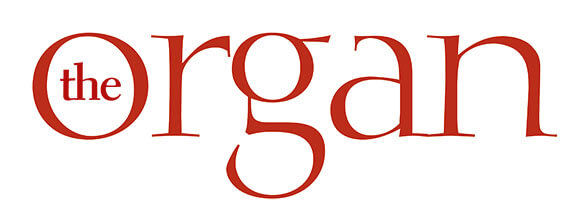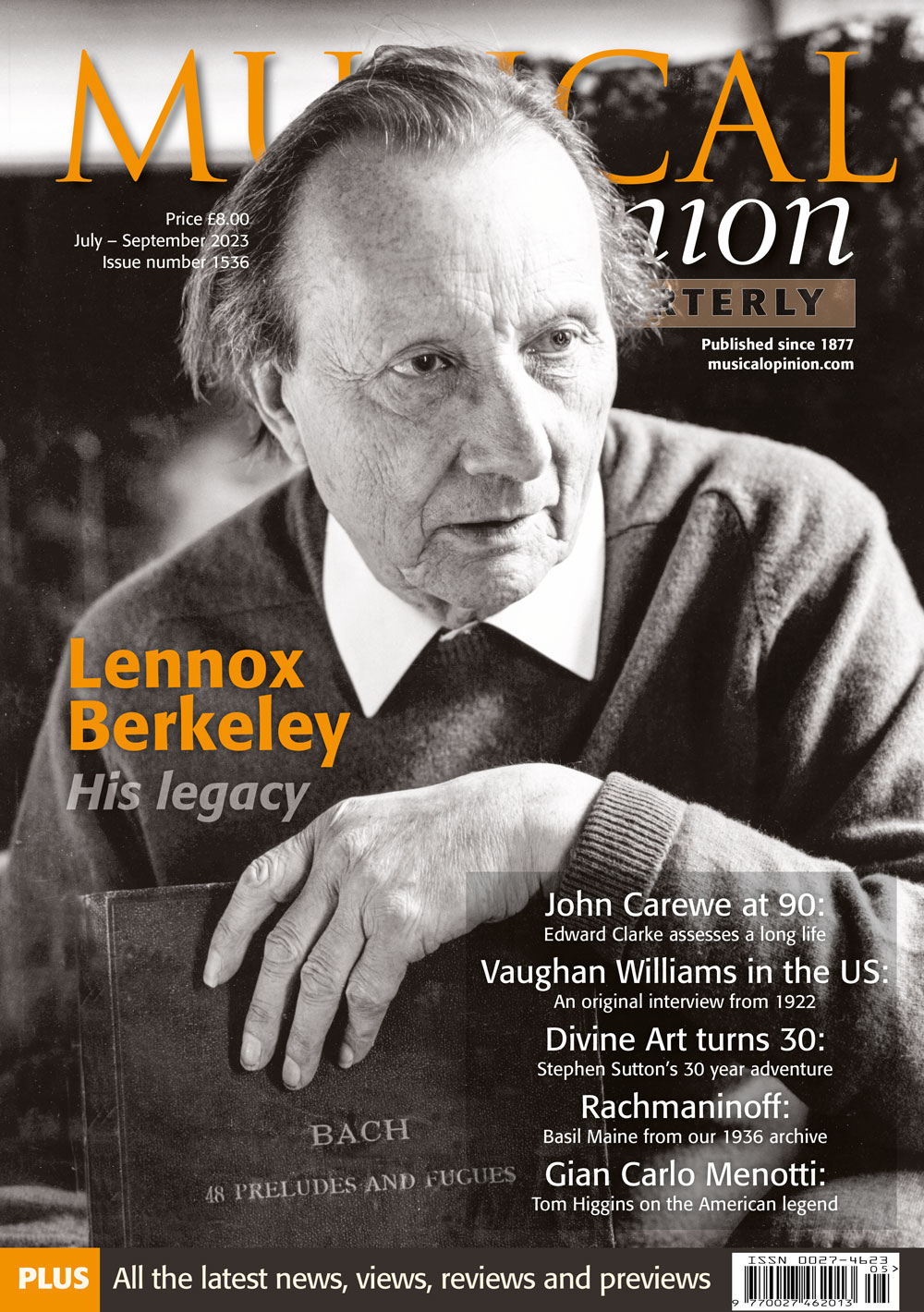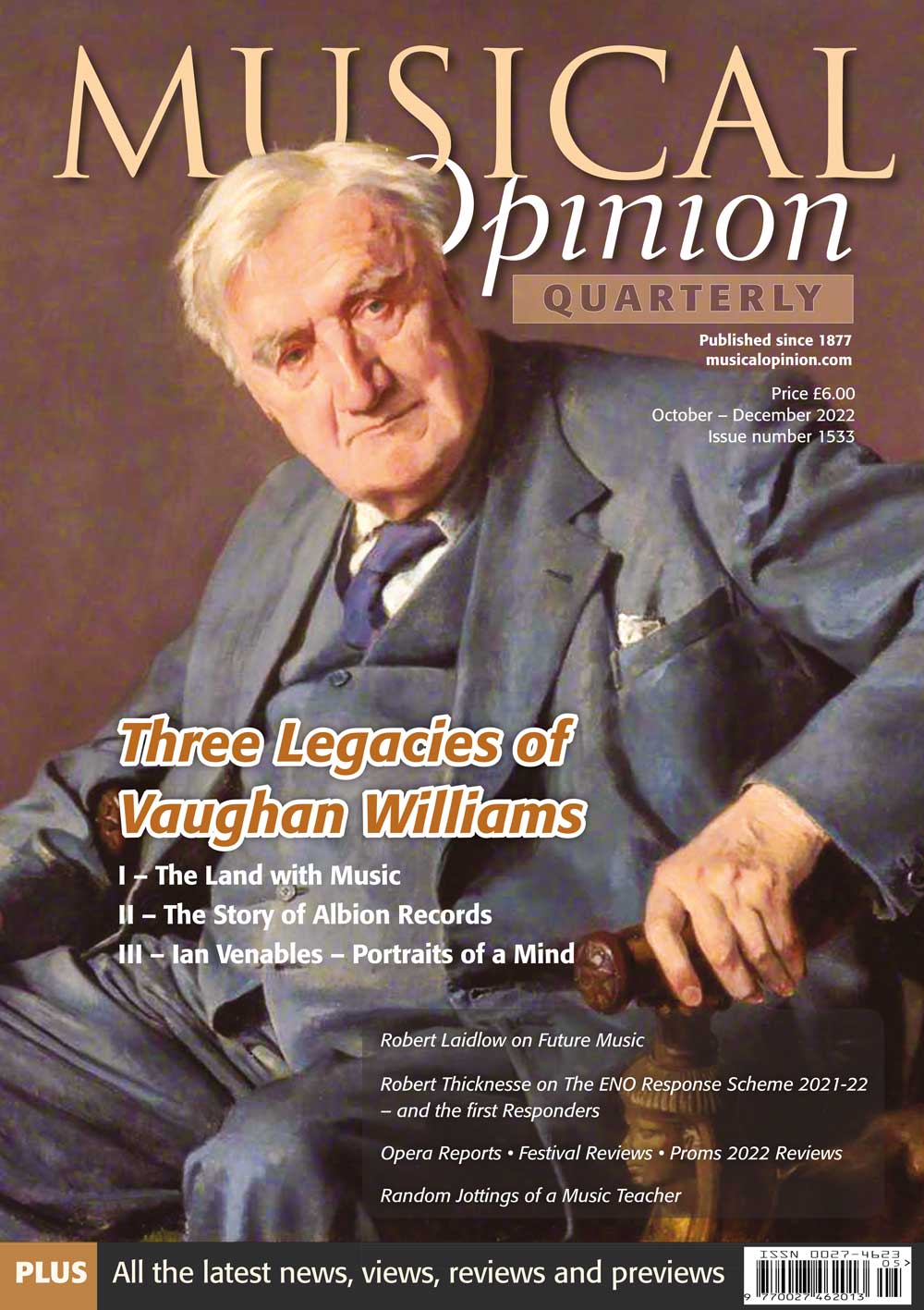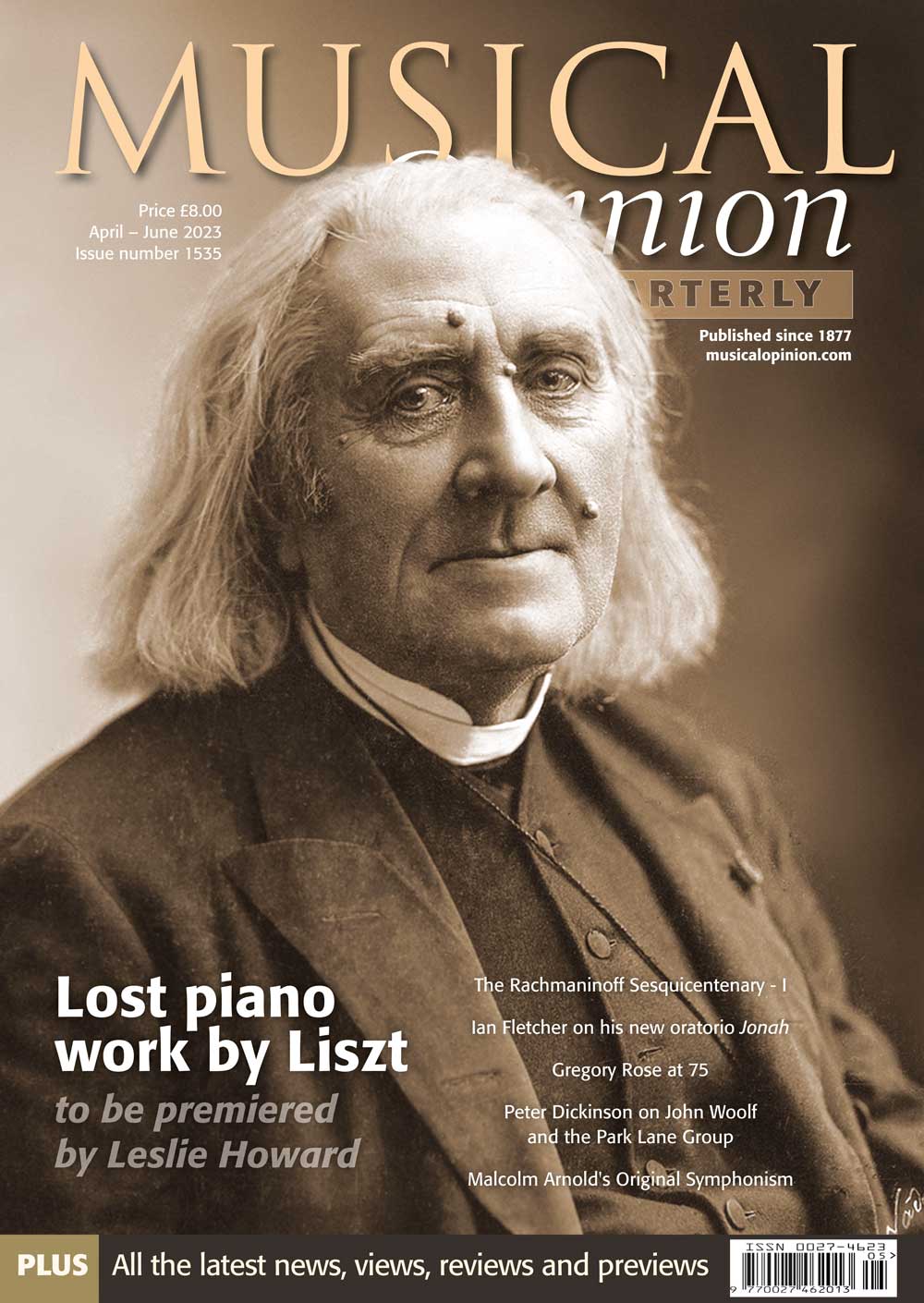Previous Issues
Summer 2024. Issue 409
Suite de Pièces pour Violon et Orgue
Spring 2024. 408
Winter 2024. 407
Autumn 2023. 406
Summer 2023. 405
Spring 2023. 404
Winter 2023. 403
Autumn 2022. 402
Summer 2022. 401
Winter 2021. 399
Autumn 2021. 398
Whilst staying at A4 size and 56 pages, the magazine has been completely redesigned with different fonts (more easy to read), bigger photopgraphs, more focus on things like specifications and more CD reviews of organ repertoire.
Summer 2021. 397
Winter 2021. 395
Spring 2021. 396
Autumn 2020. 394
Summer 2020. 393
Spring 2020. 392
Winter 2019. 390
Autumn 2019. 389
Explore By Topic
Spring 2021. 400
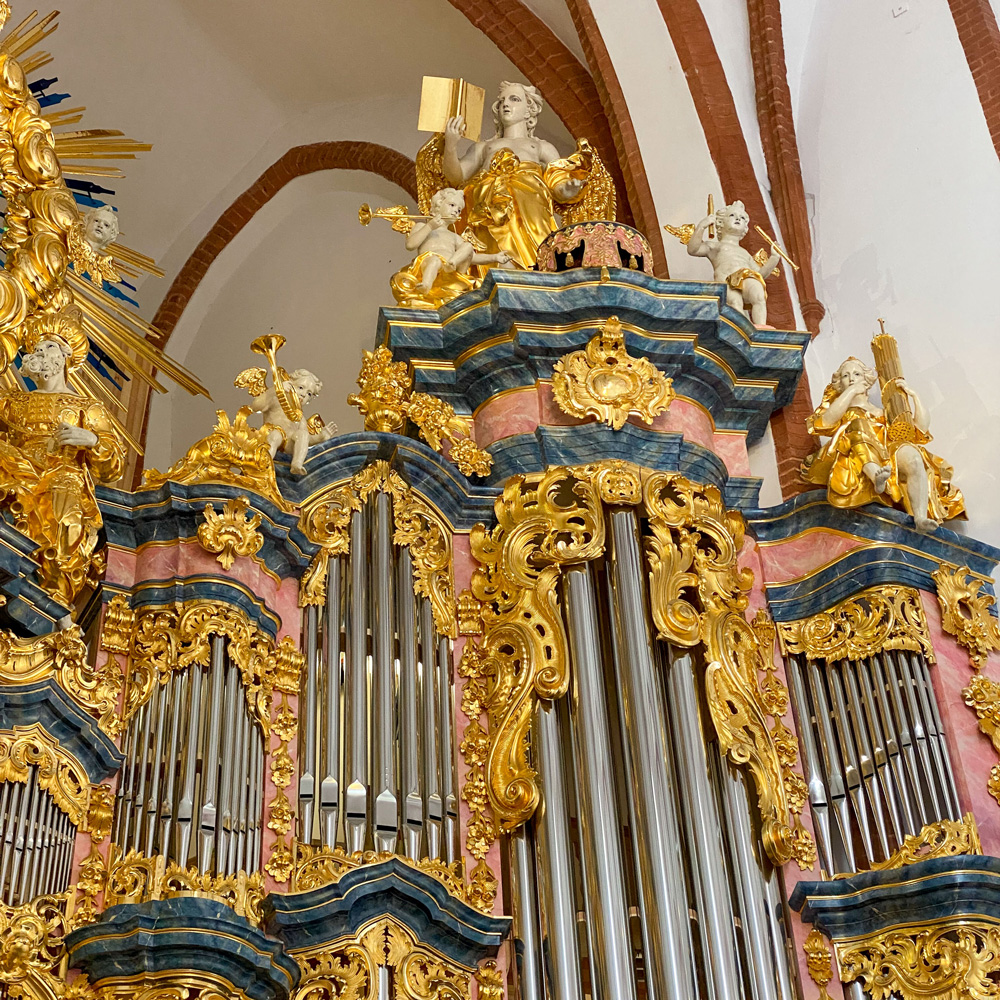
The rebirth of Michael Engler’s treasure in Wrocław
Dr Michał Szostak
Fire and organs equal disaster and destruction of the cultural heritage. Nevertheless, fire and organs may be the beginning of something new that would not be born without tears and pain. We keep in mind the fire at the Notre Dame Cathedral in Paris when the whole world cried and followed how the fire had been consuming this masterpiece of architecture. On the other hand, we are the witnesses of rebuilding the cathedral itself and renovating the organ, which will undoubtedly be restored and may be modified. It is not often that we see reconstructions that consider historical truth and endeavour to cleanse the organ of the effects of further modifications, wanting to recreate the instrument in its original technical and sound state. One such process is the meticulous restoration of the world’s largest organs at Boardwalk Hall in Atlantic City, USA. The cost of reconstruction while maintaining original characteristics from the era is many times higher than the cost of building a comparable instrument using modern solutions.
Wrocław is the main and the largest city with county rights in southwestern Poland, located in Central Europe, on the Silesian Lowland, at the Oder river. As the historical capital of the region, the city has played an essential role for the entire region. WITH FULL SPECIFICATIONS
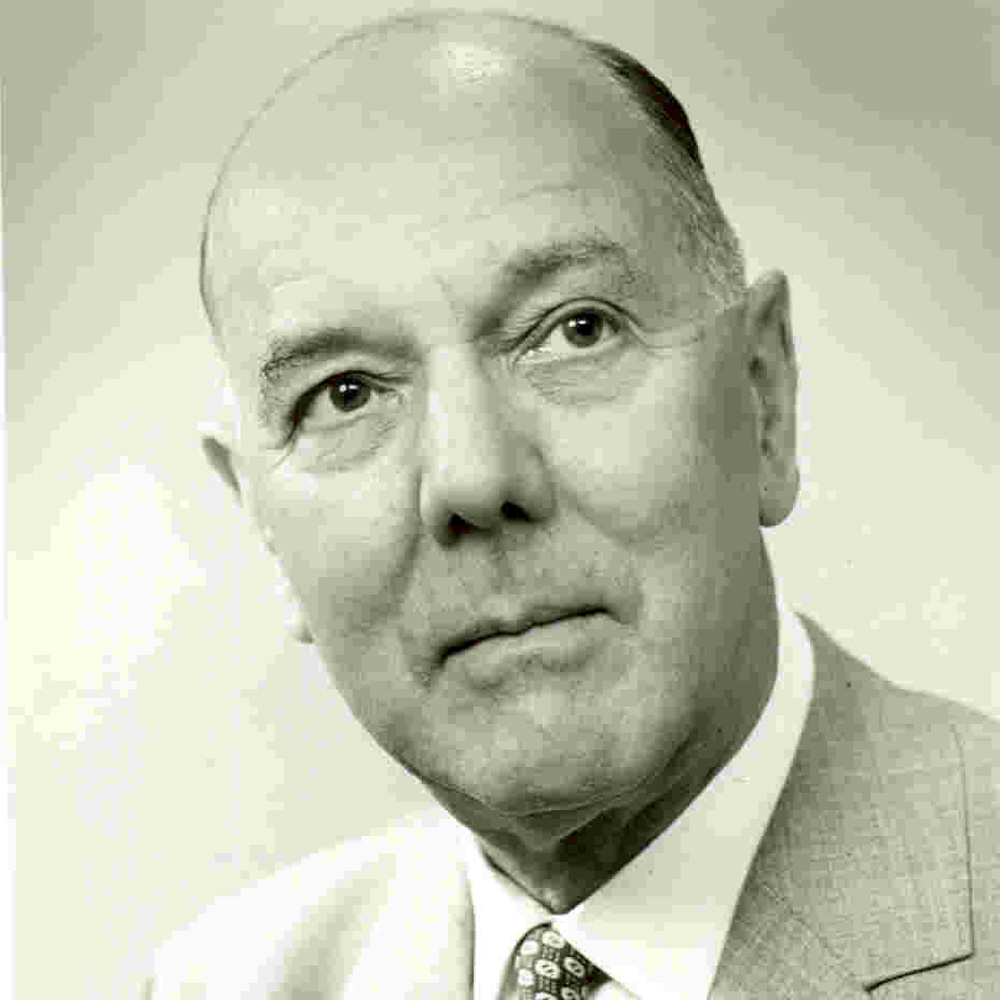
Frank Dickinson (1906-1978)
The repertoire of a provincial organist 1934-44
My father, Frank Dickinson, was born in Blackpool, the eldest of four children. All were musical and played the piano to a good standard, including the two girls. My father had an excellent piano teacher and had a good technique, even latterly on negligible practice, but there is no record of his having had any organ lessons. From a musical point of view, he was a gifted amateur. His professional field was research into contact lenses; he co-edited the first book on the subject in 1946; developed an international career, winning many awards, and ran a flourishing optical practice at St Annes until his death, where there is a blue plaque in St Annes Square to mark his achievements.
The unusual aspect of my father’s stint as a church organist at Fairhaven Methodist Church, The Drive, Lytham St Annes, is that he kept a record Sunday by Sunday from August 1934 to January 1944 of all the music he used at the services in a 377-page book called Music Record. This was not the case when he used a deputy. There is no record of whether he played for weddings and funerals when he probably used deputies.
At that period in non-conformist churches the opportunities for organ solos were before the service; during the offertory and the communion; and after the service. My father almost always played for half an hour before every service, setting the atmosphere and enabling him to try things out. He never seemed obviously devout: his music was his offering. One old lady said: ‘When Mr. Dickinson plays the hymn over, you can hear the words’. The family spent a year in South Africa in 1949 and my father got to know Rupert Stout, organist of Central Methodist Church, Johannesburg.
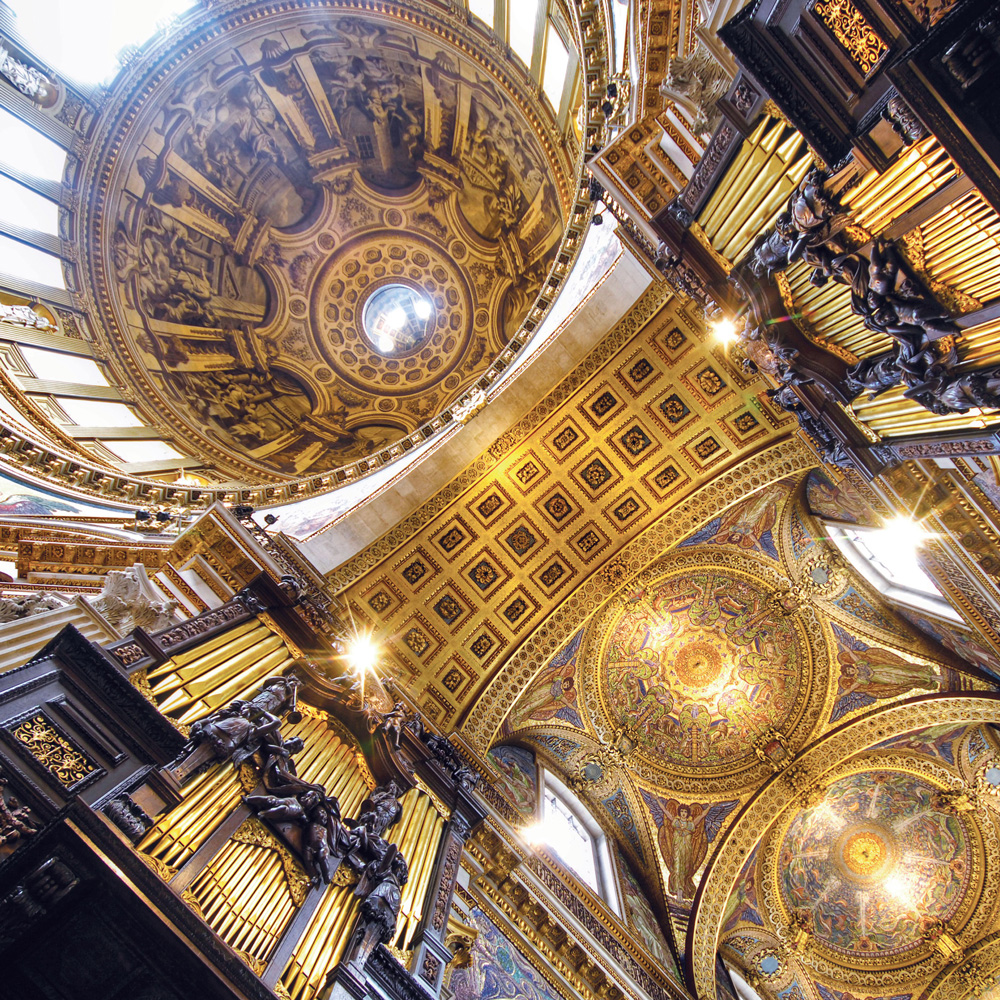
St Paul’s Cathedral grand organ
Simon Johnson, organist and assistant director of music, reflects on the instrument.
‘Saint Paul’s is a beautiful building, but an almost impossible one for which to design an organ. In some ways the Mander/Willis instrument, distributed in five places round the Cathedral, is an unfashionable answer to the challenge – but it does make some glorious music’.
So states John Norman in his description of the St Paul’s organ in The Organs of Britain (1984). It is certainly an instrument that has had to take advantage of every possible technological advance in order to do its job effectively, and the latest rebuild by Mander Organs has once again opened new frontiers. Sitting in a post-restoration building, the organ of Wren’s St Paul’s has an uninterrupted history of development, and so it is helpful at this point to retrace our steps.
As John Norman rightly points out, the building is a very difficult one for which to design an organ and this factor has consistently propelled the instrument’s evolution. It began its life speaking into the Quire, the only part of the building to have been completed at that stage. WITH FULL SPECIFICATIONS
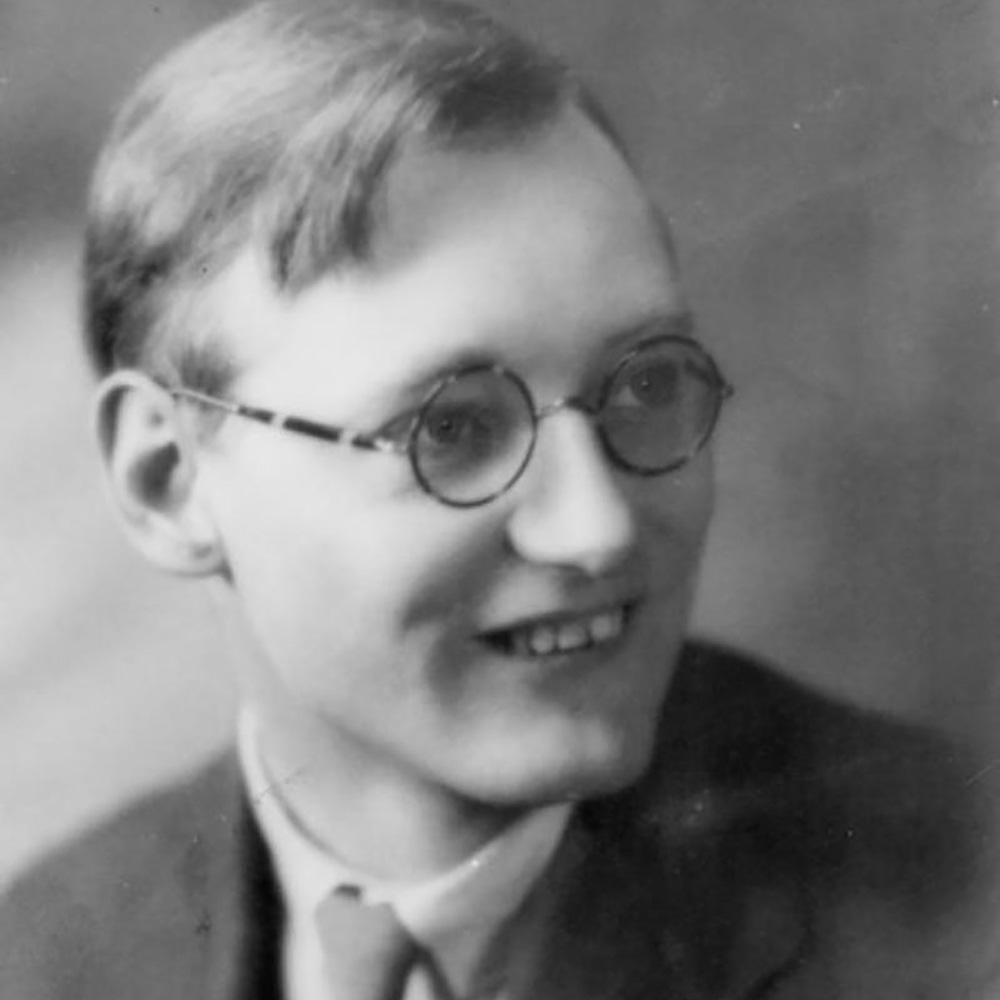
Percy Whitlock's organ sonata
Ateş Orga
From Great War to Blitz, recovery through General Strike to austerity, Percy William Whitlock (1903-46) was the organ voice, the organ broadcaster, of a generation. A twilight-Romantic, as versed in the symphonic and rural as the popular on either side of the Pond – Gershwin, Cole Porter, Ivor Novello, Noel Gay – he was born in Chatham on the Medway, 1 June 1903, to a modest Kentish family of Northamptonshire origins aspiring to higher things. In 1920 he won a scholarship to the Royal College of Music, studying composition with Stanford (‘old-fashioned’, his students rued) and Vaughan Williams (‘hopeless’), and numbering among his peers Edmund Rubbra, Gordon Jacob and Constant Lambert. He left the RCM in 1924, the previous year having won the Ernest Farrar Prize and had the privilege of playing his (since lost) Phantasy for Organ and Strings at the Royal Albert Hall, conducted by Adrian Boult.
Whitlock’s early professional life was ecclesiastical, serving overlapping posts at Rochester Cathedral where he’d been a chorister (Assistant Organist, 1922-30), St Mary’s, Chatham (Organist and Choirmaster, appointed 1924), and Borstal Parish Church (Organist, appointed 1929). In 1930, diagnosed with tuberculosis two years before, he moved to Bournemouth – of ‘giant pines and shady chines fair garden by the sea’ – taking up the post of Organist and Choirmaster at St Stephen’s Church – ‘a wondrous John Loughborough Pearson Anglo Catholic church [with an 1898 Hill instrument] where sadly he [was to fall] out with the plainsong choir director and resign’ (David Briggs). WITH MUSICAL EXAMPLES
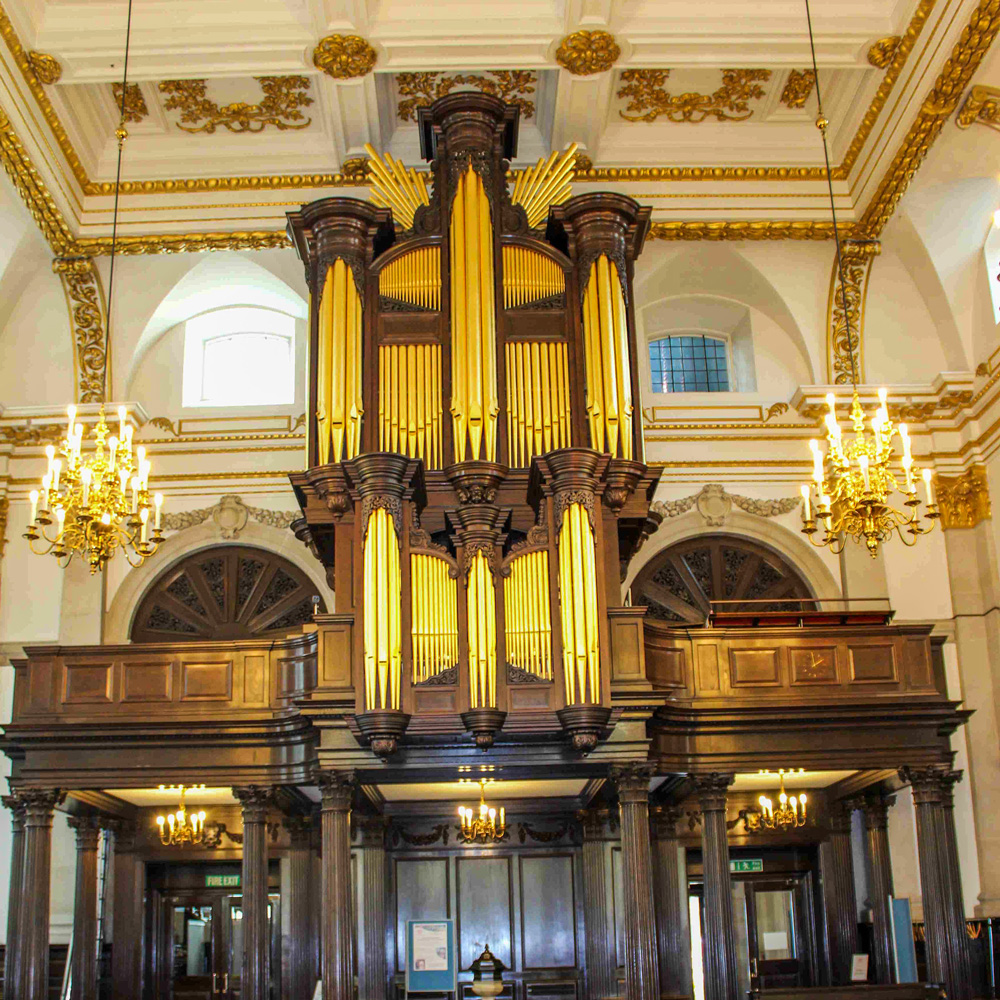
The Organ of St Lawrence, Jewry, in the City of London
Charles William Pearce (1905)
This fine church, the eastern façade of which may be ranked amongst Wren’s happiest efforts, stands at the south-east corner of Guildhall Yard. It is dedicated to St Lawrence, who was born at Huesca, in the kingdom of Arragon, Spain, and who became treasurer of the Church at Rome, being deacon to Pope Sixtus, Circa A.D. 259.
In the persecution under the Emperor Valerian, St Lawrence underwent martyrdom by being laid on a gridiron and broiled alive over a slow fire. His Feast Day, August 10th, appears in our English Church Kalendar. Stow says, in his Survey of London, that the epithet ‘Jewry’ was applied ‘because of old time (since the reign of William the Conqueror, who first brought Jews into this realm) many Jews inhabited there about.’ Allen, in his New History of London, 1839, states that ‘St Lawrence, Jewry, was anciently a rectory, but being given by Hugh de Wickenbroke to Balliol College, Oxford, AD 1294, the rectory ceased; wherefore Richard, Bishop of London, converted it into a vicarage; the patronage still continues in the Master and scholars of Balliol alternately with the Dean and Chapter of St Paul’s.’ Stow says of the old church, ‘it is fair and large, and hath some monuments.’ He enumerates as many as thirty-eight, including those of seven Lord Mayors, several sheriffs, and other worthy citizens, whose names are now forgotten. WITH FULL SPECIFICATIONS
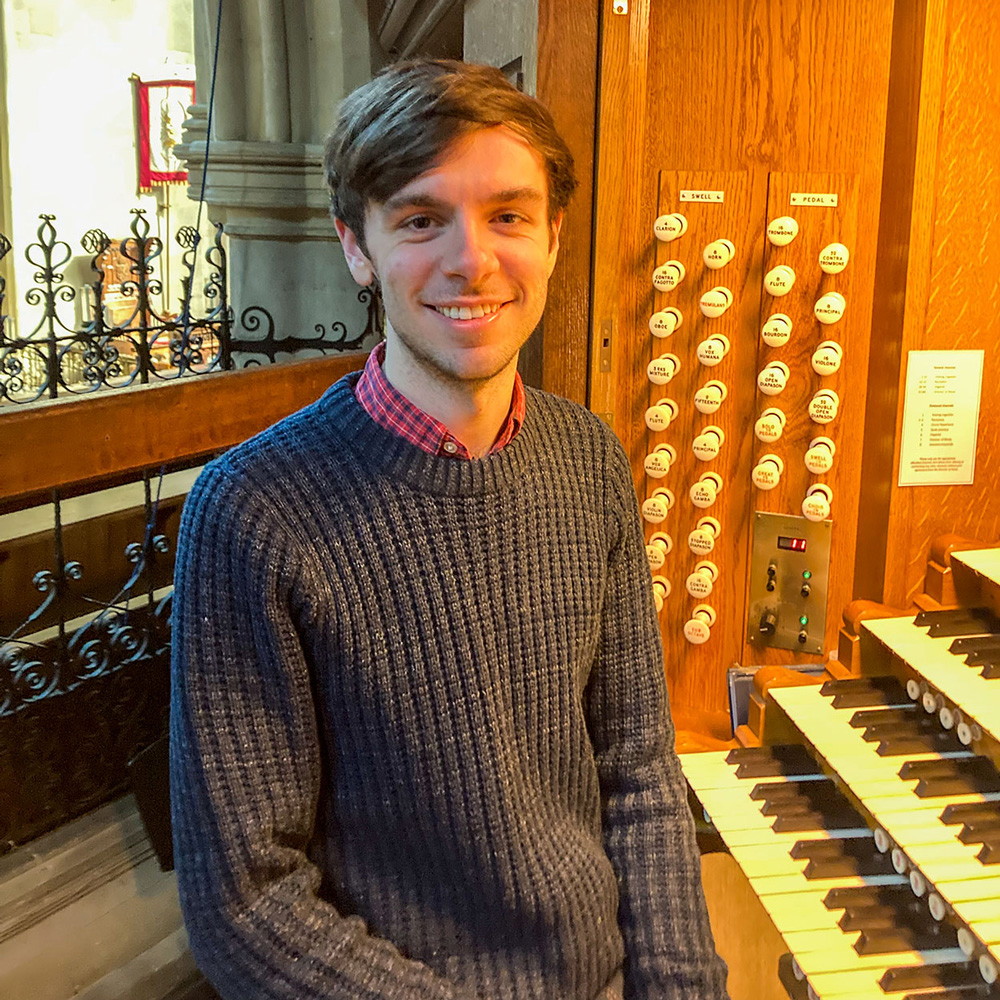
Northampton’s romantic hidden gem
Callum Alger
The Advanced Postgraduate Diploma course at the Royal Birmingham Conservatoire, entails a module entitled ‘Professional Project’, allowing a student to undertake a self-defined activity entirely tailored, to their own interests and career aspirations. The possibilities are never-ending, and the scope is vast. Having previously recorded a CD of German chorale-based repertoire entitled Klangreden with Gary Cole of Regent Records for a similar project in 2019, as part of my undergraduate degree, I felt this would be a good time and opportunity to record my next CD. But where? And what repertoire?
I grew up in Northampton, and was a chorister at St Matthew’s Church, most notable for its history of art and music. The church’s second vicar, Walter Hussey (who later became the Dean of Chichester), was key in the commissioning of famous pieces of art, including The Crucifixion, a painting by Graham Sutherland, as well as the Madonna & Child, a sculpture by Henry Moore. Some notable musical commissions from the church include Leonard Bernstein’s Chichester Psalms, Benjamin Britten’s Rejoice in the Lamb, and Gerald Finzi’s Lo the full final sacrifice. The 4-manual organ, donated by the Phipps family, was built by JW Walker & Sons in 1895, and was believed to be one of the twelve best organs to be built in this country at the time. WITH FULL SPECIFICATION
